This post has been moved to OpenChutes.com. All future postings of Powwows, Indian Relay Races, Rodeos and Rendezvous will be posted there from now on exclusively. So if you’re looking for new images and posts for all those events attended this year, plus all the old posts posted on BigShotsNow.com check out OpenChutes.com. See you there!

Camp life at the Crow Fair is filled with opposites. Some times the camp is a wash of chaotic activity as everyone gets ready to attend the dance ceremonies or the parades and other times, like this morning, which happened to be a Sunday morning, everything was calm and serene.
Walking through the camp in the early morning just after sunup everything is still. There are no motor sounds yet from vehicles, or people calling from one area to another. It is quiet. The only sounds you hear are the horses gently calling to each other and the quiet sounds of camp life where people are just stirring, thinking about getting breakfast going, standing out by their lodges seeing what kind of day it is going to be. It is a good time to see the camp.

Horses are feeding, taking advantage of this quiet time. Soon enough they’ll be as excited as anyone else in the camp to be getting ready to attend the various activities.

The teepees are clustered closely together which usually means a large family group are all settled in next to one another.

Many groups fly the American flag above their camp.
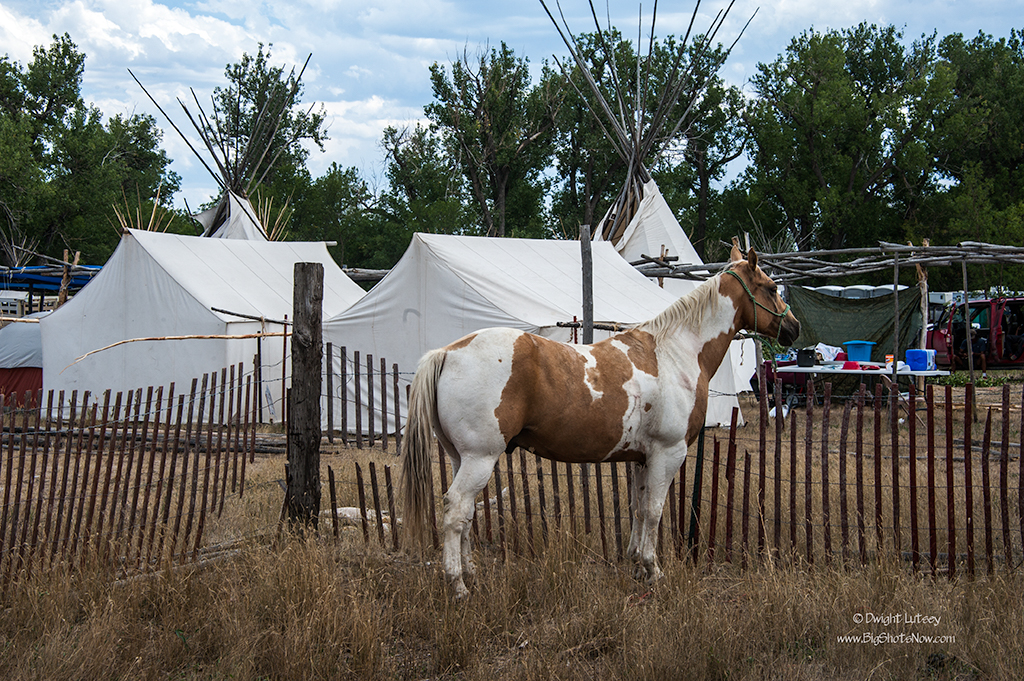
A horse is waiting for someone to come and take him the river for a long drink. He’s just heard some other horses go by as early risers get a start on the day.
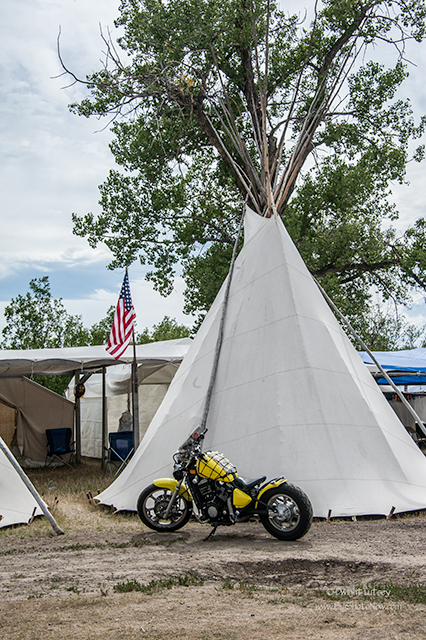
This is 2015 not 1876 and the rides are different for some of the people. It’s likely there is a horse tucked away somewhere but there is also a new breed of horse, a mechanized one, and it seems fitting to see it tied up in front of the lodge.

It’s unsure whether these folks that occupy this lodge are coming or going as it looks vacant. The topping to go on the arbor isn’t all in place up on the roof yet, so we’re betting on their coming.
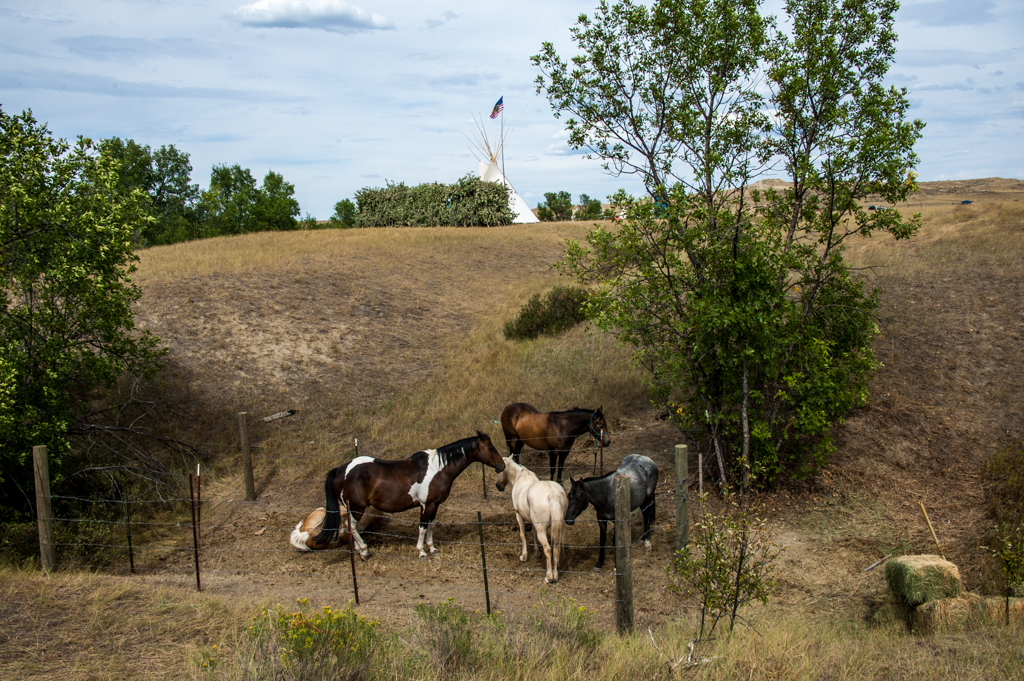
Horses resting up for the day to come. Their owners lodge is just visible up over the hill.
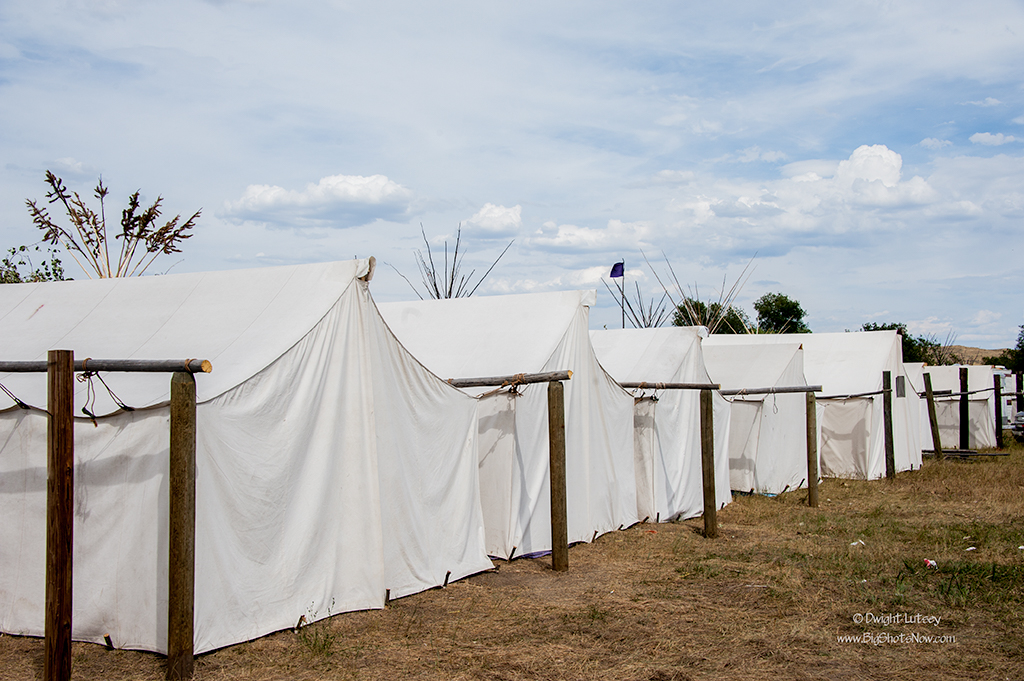
There are many of these wall tents in the camp. Someone told me they serve as overflow if the teepees are overcrowded. He also told me he’d rather be in a teepee as the tents were too hot. The opening at the top of the teepees can be adjusted to let the hot air out so they were cooler to be in. After 100+ degree days any thing that would offer coolness was in high demand.
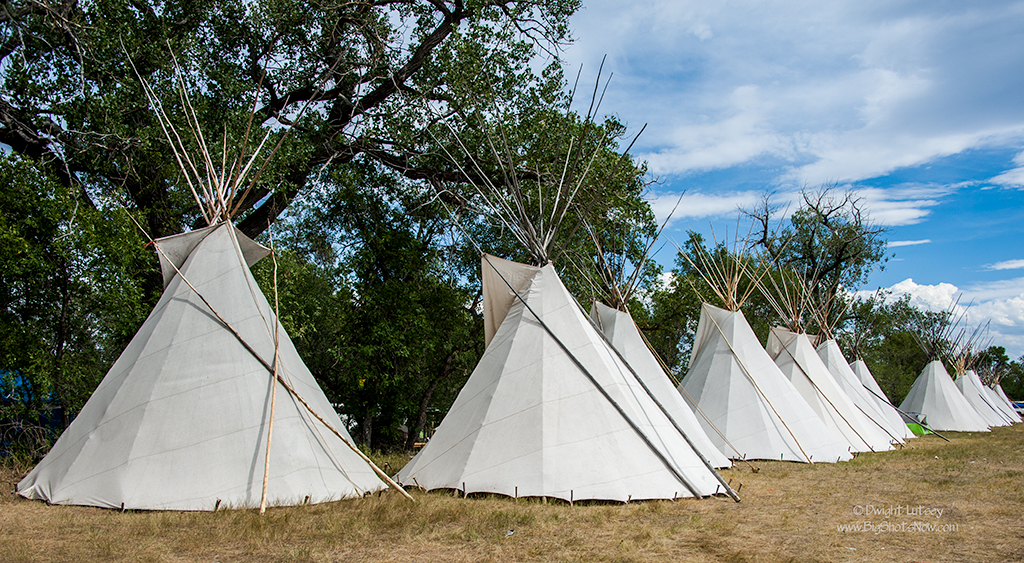
Placed against the tree line for shade and to block any wind this is a well placed group of lodges.
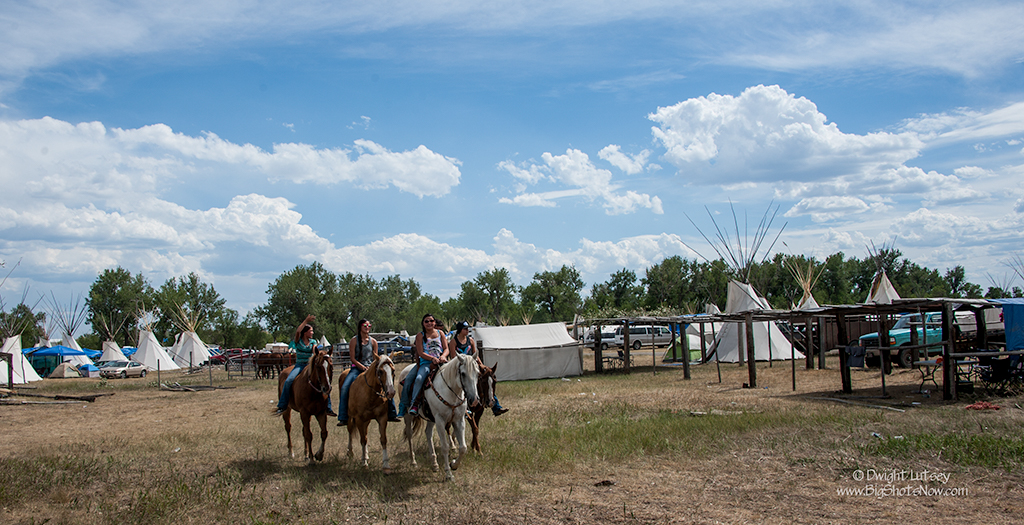
These riders are taking their horses down to the river for a drink. It’s also a good time to talk about whatever young women talk about.

The doors of the lodges are all facing the trees. you can see extra lodge poles leaning against the tree line.
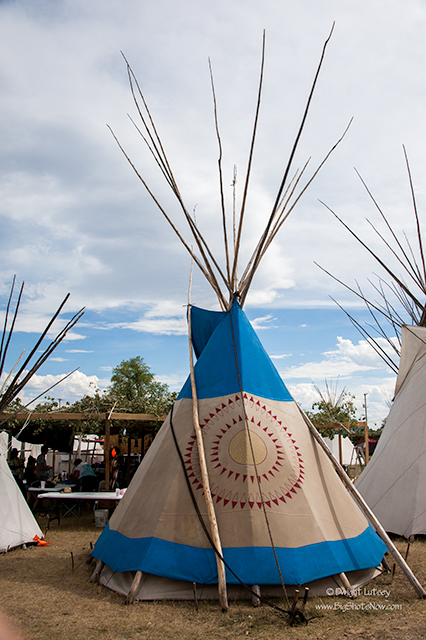
There were some teepees that were decorated or painted but the majority were of white weathered canvas.
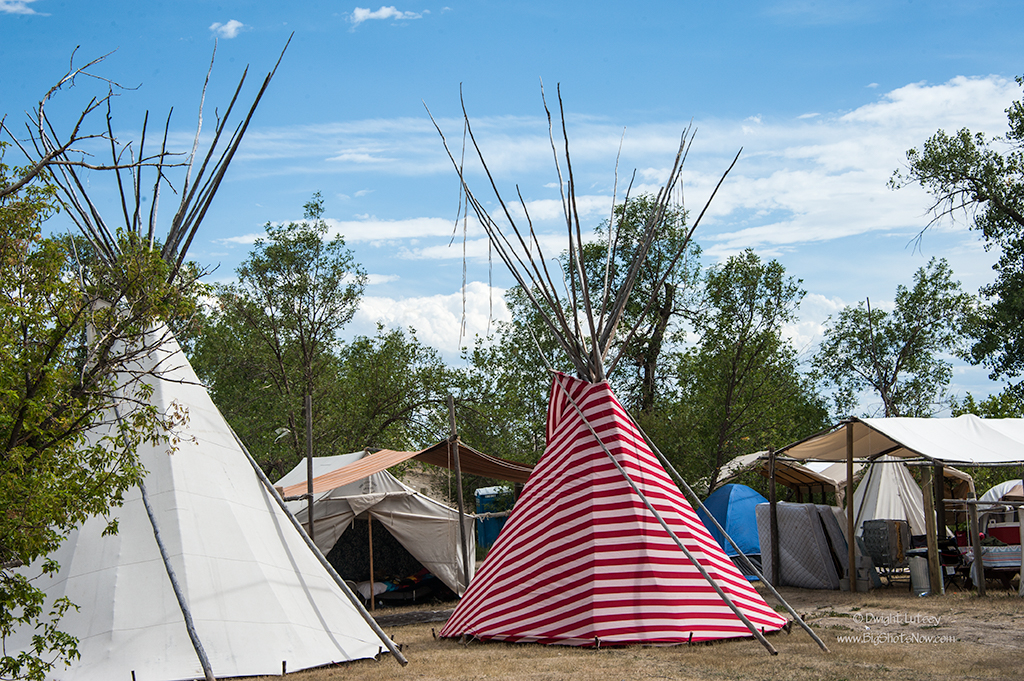
One evening after the dances ended very late, it seems that my vehicle misplaced itself and I wandered for several hours through the maze of teepees trying to find it. By about 1:30 in the morning I had found all 1200 of the tepees but not my Jeep. Of course never having been lost before in my life I neglected to bring a flashlight and since there is a major absence of street lights in a Crow camp, finding ones way about was difficult. Fortunately I learned an old Indian trick that night and turned on my flashlight app on my cell phone and eventually I found this red striped teepee that I remembered seeing on the way in and shortly after found the Jeep. There are always adventures on these trips, some big, some little. This was a little one even though it didn’t feel that way as it was happening.
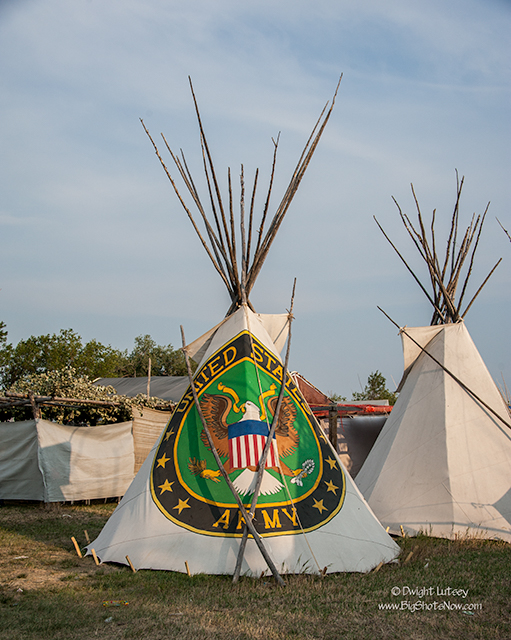
There were some teepees whose decoration had an unmistakable meaning
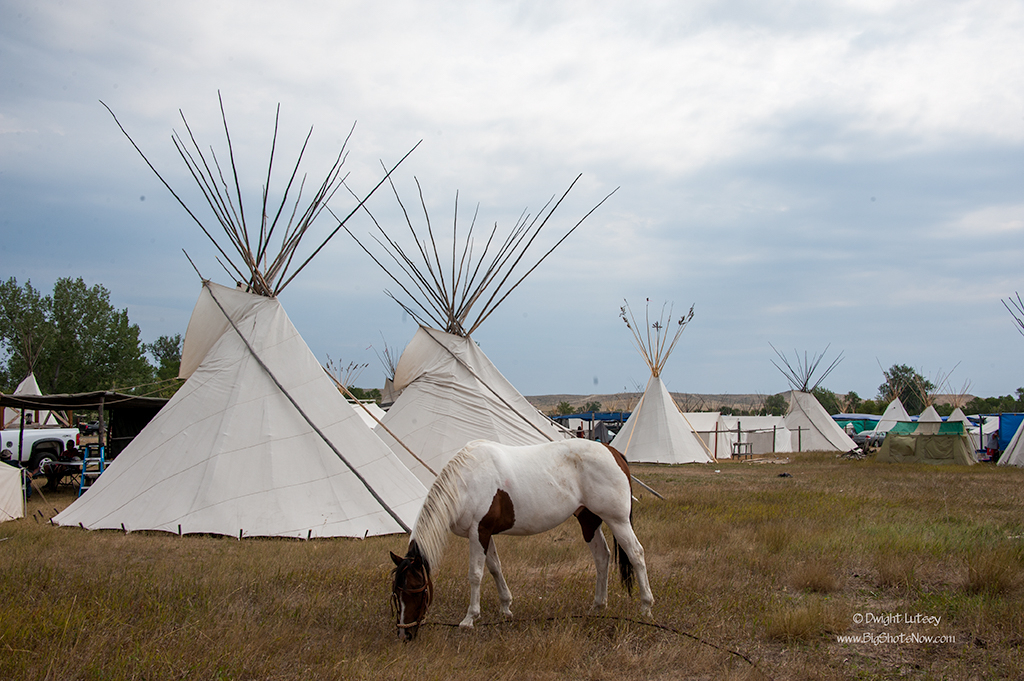
Horses picketed amongst the lodges was an amazing sight to see. The mix of old ways and new was constantly presented to the observer.
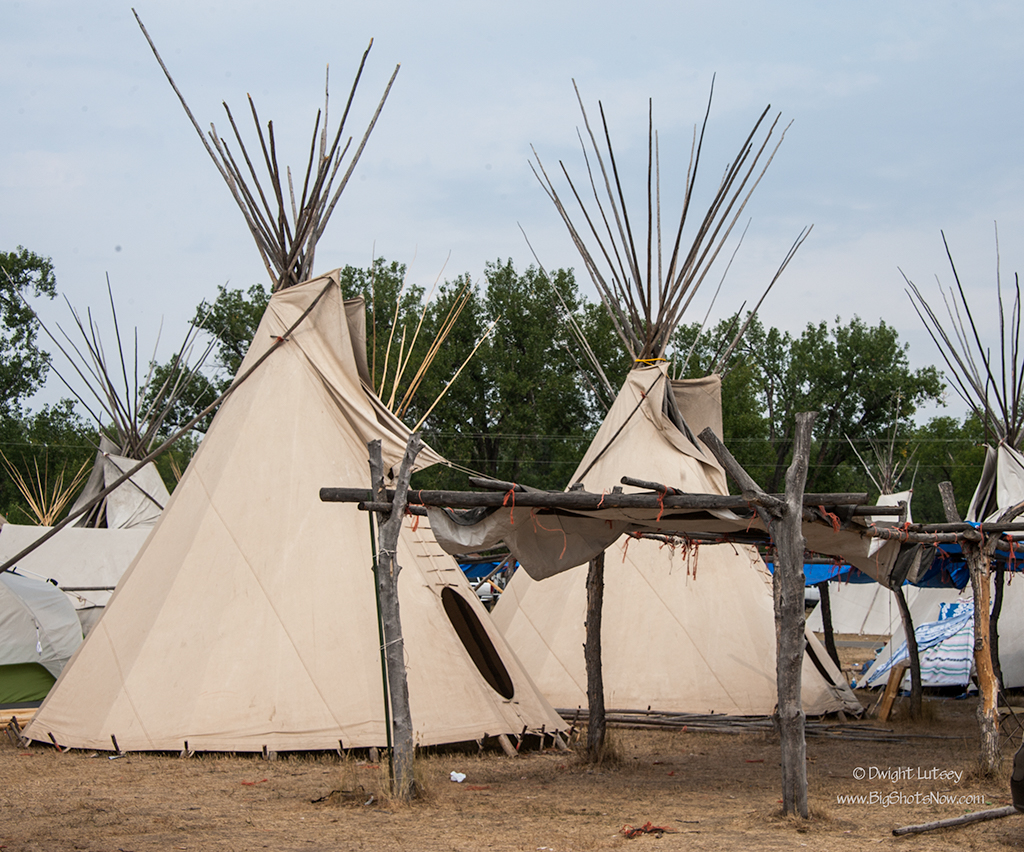
The patina on these lodges indicated that they had seen plenty of use. The ivory color was perfect for the setting.
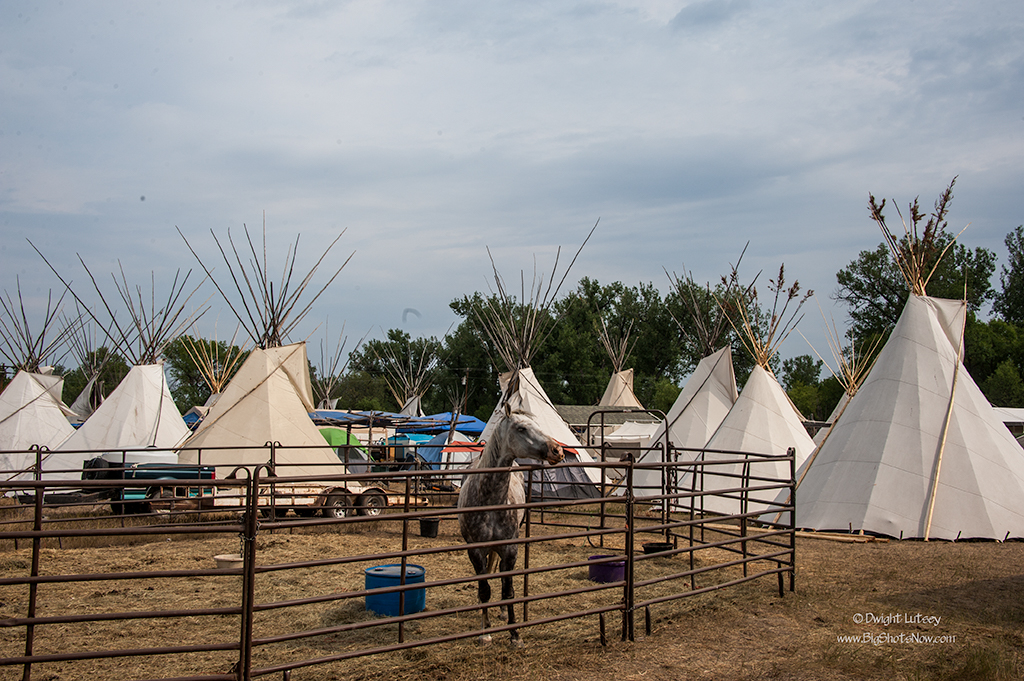
It’s getting a little later in the morning now and this horse was definitely interested in going to the river. Shortly after this picture was taken he got his wish.
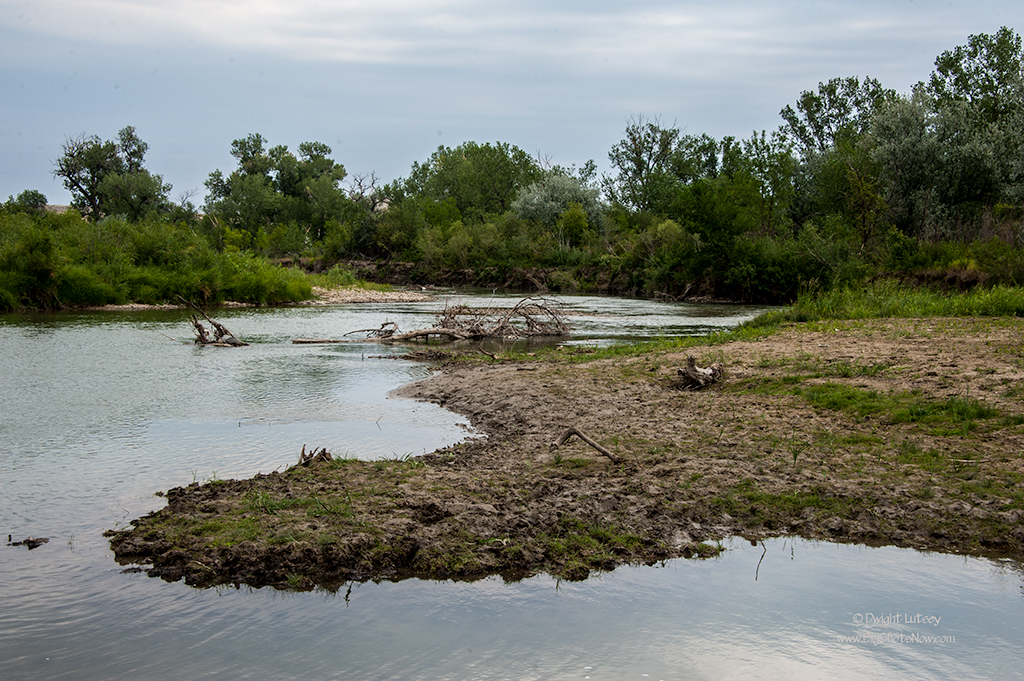
This is the Little Bighorn river as it wends its way through the camp. It’s quite shallow here so it’s easy to ride the horses down to the edge.
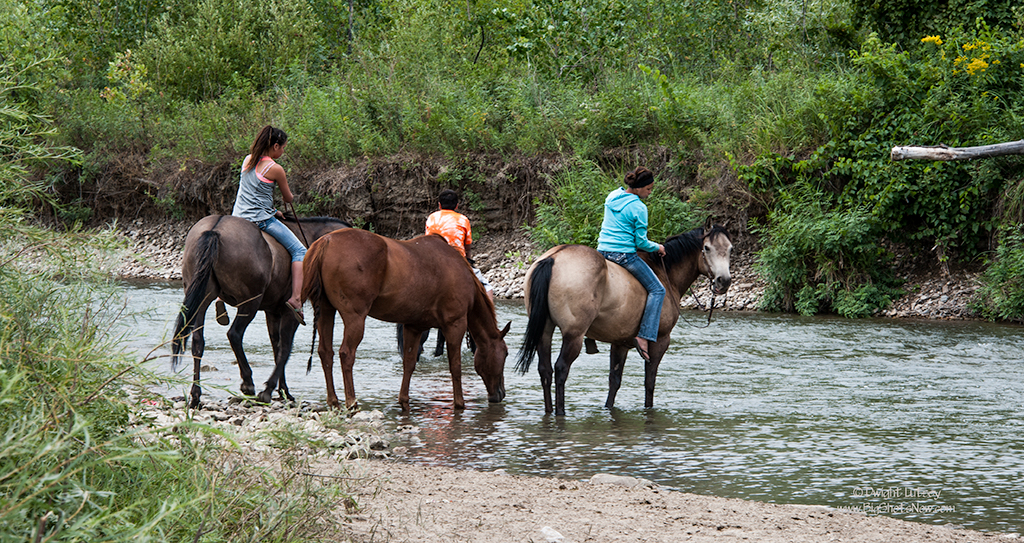
Some of the horses were eager to wade out in the water where it was slightly deeper, others preferred to drink at the bank.
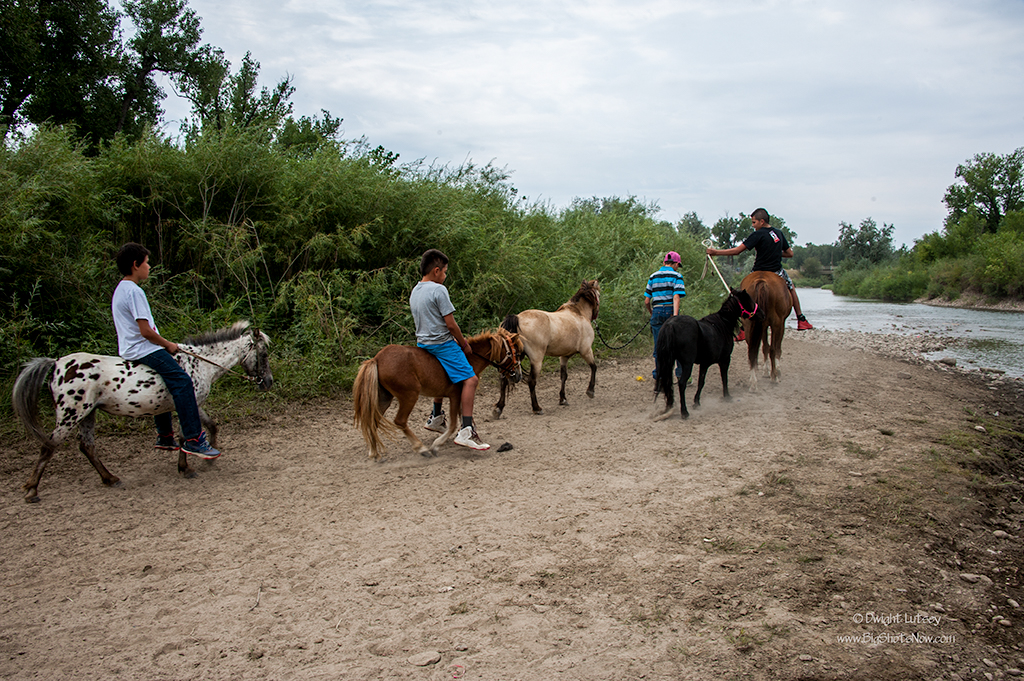
Boys bringing ponies down to get their drink. There was no horse-play here, pardon the pun, as these guys proceeded to get the stock watered. No rock throwing or goofing around, they got the job done well and were soon on their way back to camp.
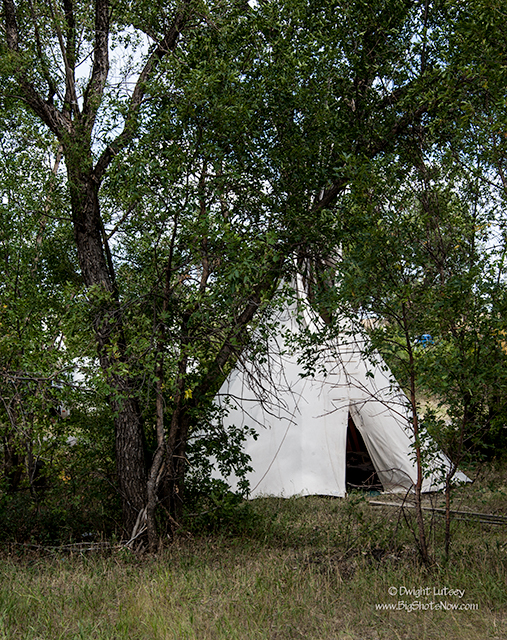
A teepee set up along the river. They had shade all day and you could hear the river running by as well. A bonus for picking a great spot.

An overview of a small portion of the camp from a little ridge that ran along the back of the camp.
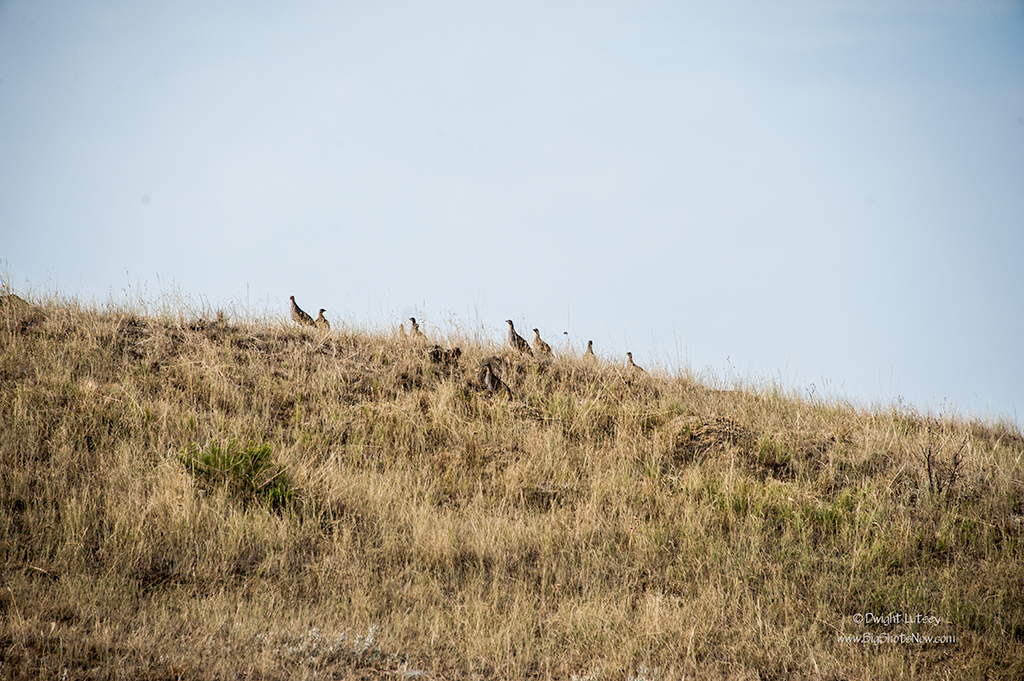
While out on the edge of the camp and looking towards the plains a flock of Prairie chickens passed by going swiftly over the exposed hilltop to the safety of the ravine on the other side.

This is a panorama made up of 25 pictures stitched together to try and show the size of the camp. If the picture were printed out it would be over 8′ long. Consequently to compress it down to this size so it would fit on to the page of the blog, details are very small indeed. If you click on it to see the slightly larger version you can see a little more. But as it was only intended to give you a sense of scale and an overview of just how large the encampment is, hopefully it does that, even if you can’t make out who it is sitting in front of that back teepee is.
It is a good feeling to see that many lodges together and the people that fill them living together in harmony. When you think that there might be an average of four people to a lodge that is 4800 people. That’s a small town any where you want one.. What a great experience to have, to be able to see and take part in this get together. Crow Fair 2015.
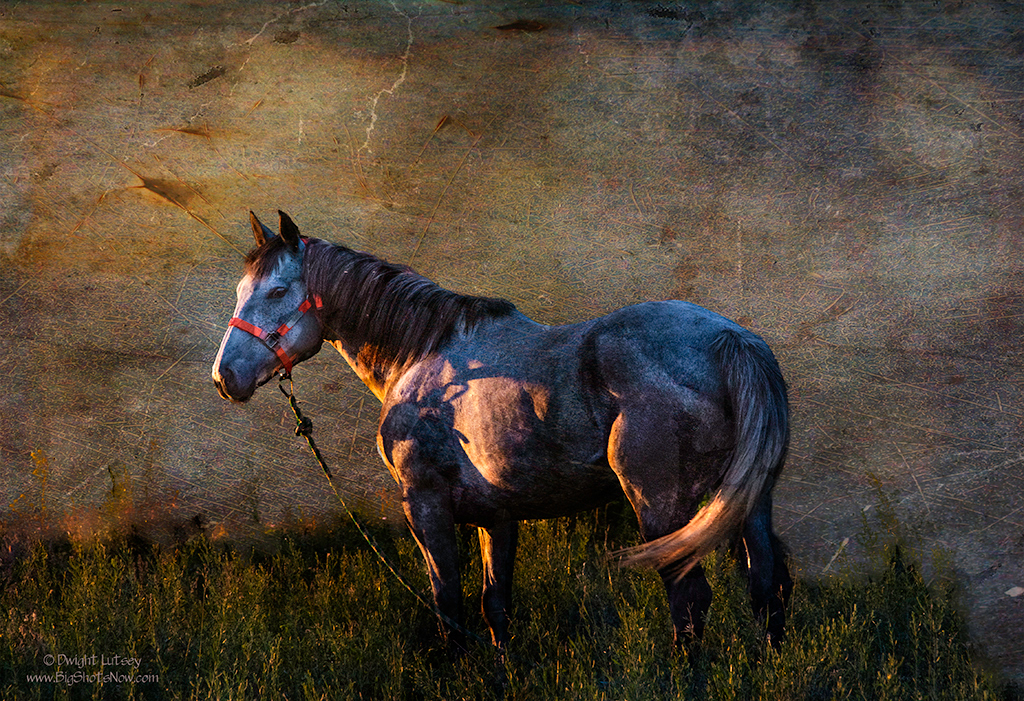

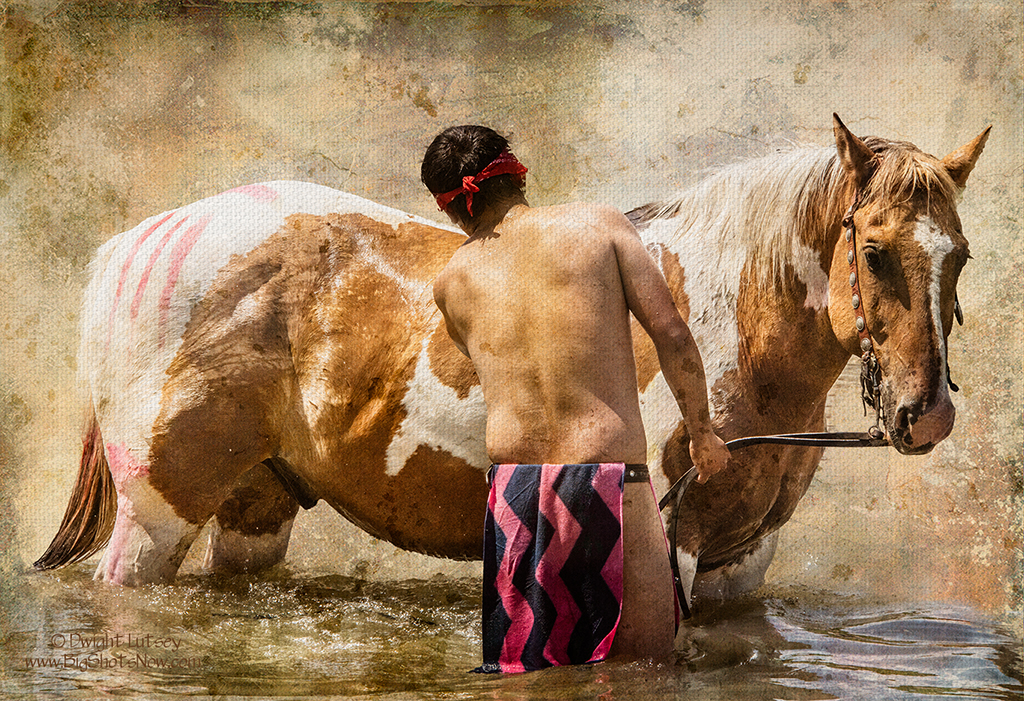
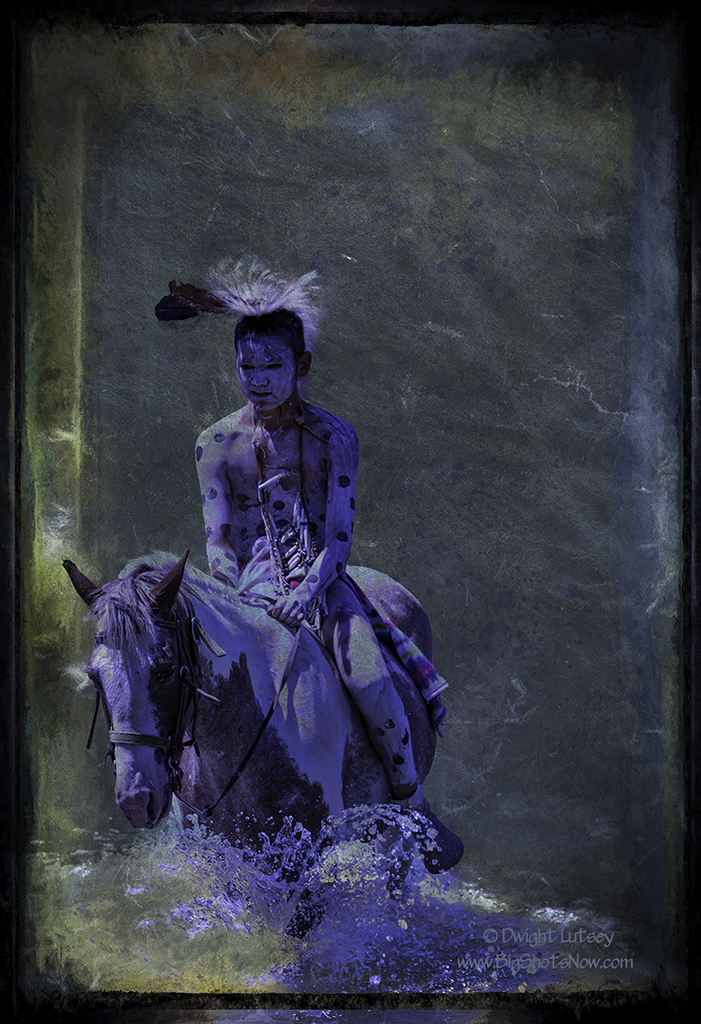
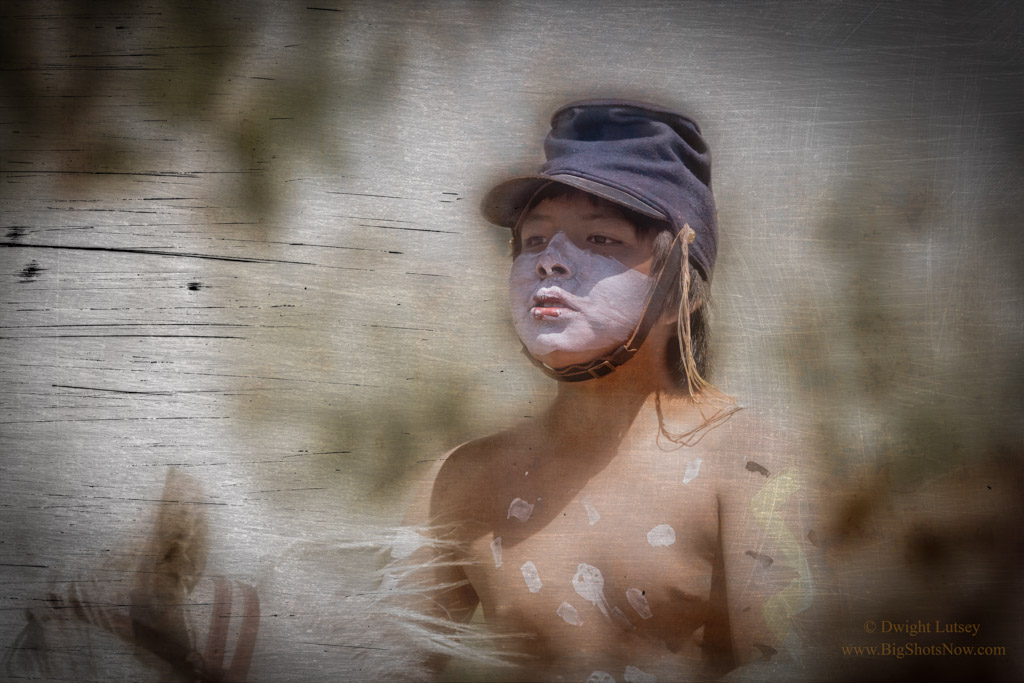
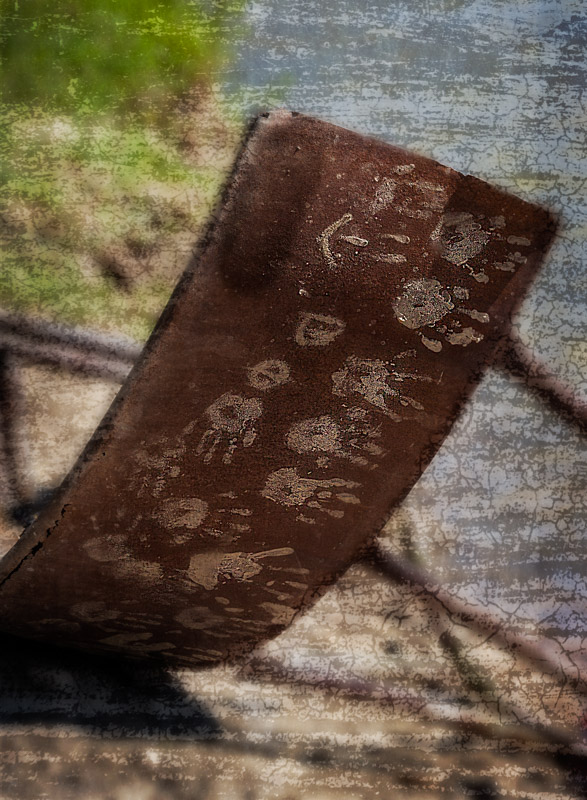
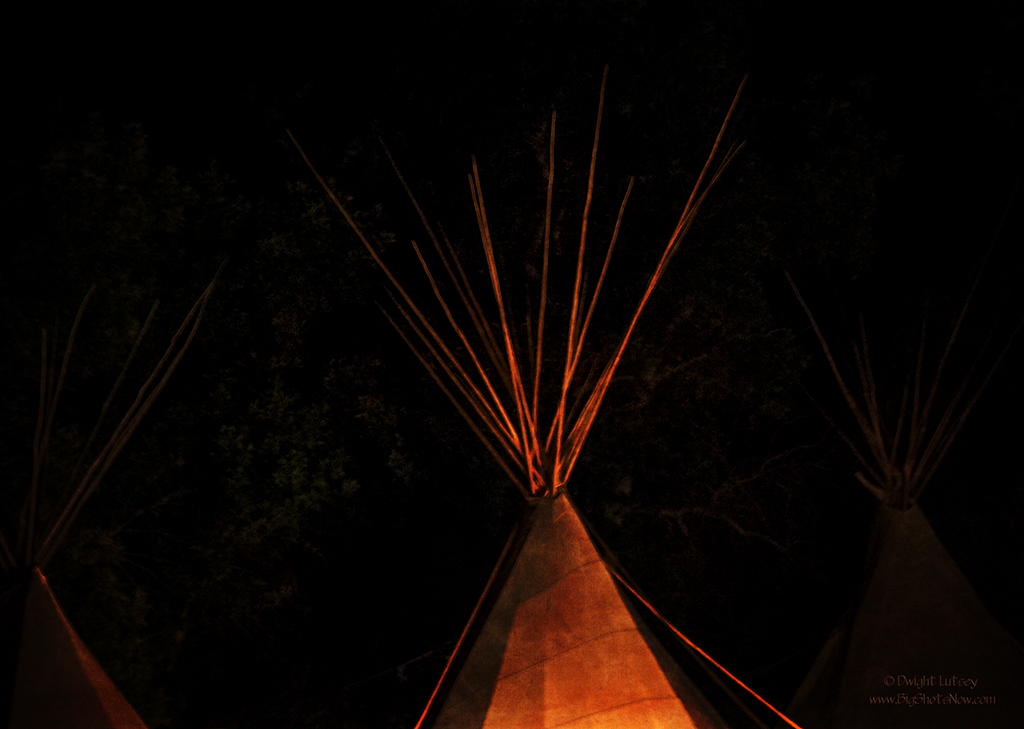

























You must be logged in to post a comment.